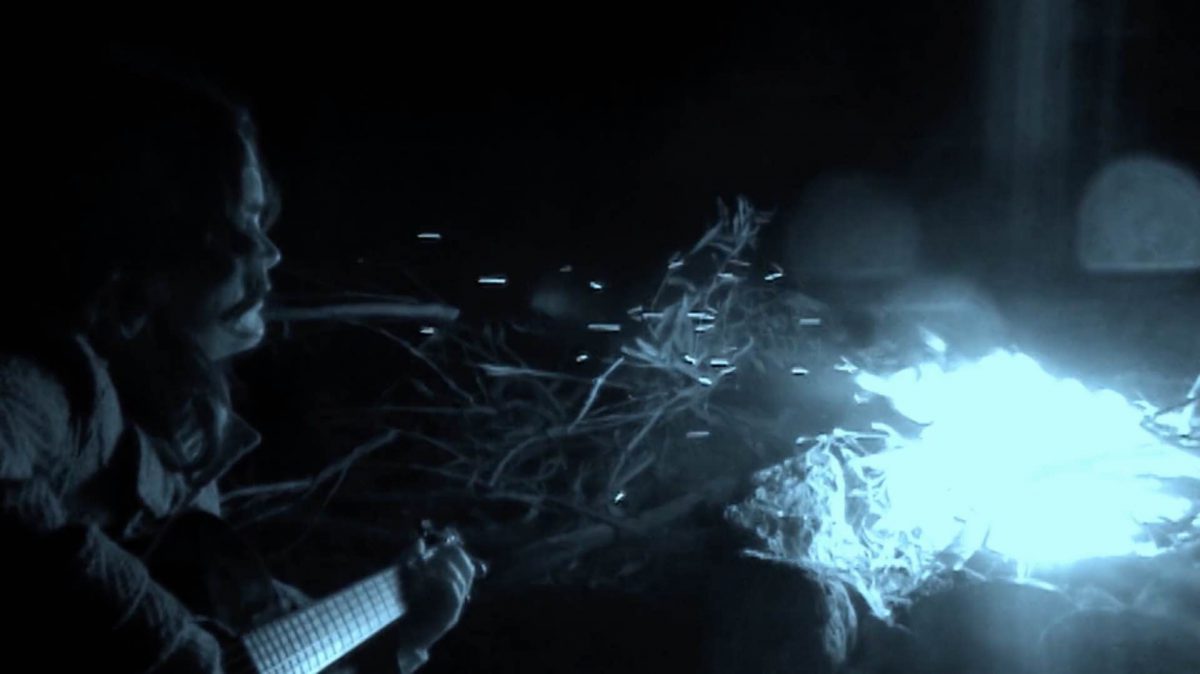Film Criticism Workshop
Melodies of Silence
Night Shot by Carolina Moscoso Briceño

Slow-shutter underexposed shots of communal spaces flood the screen with strangers that seem to be too close in proximity. The camera shakes and whips like a paintbrush in a trembling hand, and people’s faces blend into the humble tungsten lights, as well as the night.
Night Shot deals with a heavy theme, rape, a topic that’s infiltrating art more and more recently, but we soon learn that a struggle of this level is anything but incidental. The film is an ongoing 9-year healing journey of the victim (a misnomer really, as she did refer to the experience as both “good and bad”) told in essay format, oscillating between many different modes of narration: black boxes of white texts in the screen center, reports from the police regarding her rape case, her mother’s letters, gynecological test results, and the director’s voice-over. All are layered on top of her daily interactions with the external world while still carrying her wounds, open but invisible, offset by a lot of black frames, and melodies of silence beneath an exquisite sound design.
A disconcerting quietness engulfs the director and the movie, presenting a stark contrast with the vitality of the activities being shot against the backdrop of enhanced natural ambient sounds and creative acoustics. She sits alone, in silence, or reads a poem to herself. She finds refuge in darkness, looking at the world in night-mode, only to find herself scorched by the gentle daytime, during which we see little but a blinding whiteness, a lack of data, of sentiments. It seems like security could only be found in being alone with nature, best portrayed through a touching sequence of tactile interactions with a school of seals. Still, the film is rich in textures: dripping muted paints, washed out clouds and mountains, grass and pavements wheeling her bike,… These are fragments of an agonized life on screen: the film is less a verbal lament, but a physical invitation to feel her pain in just existing. Pain is that powerful, or disempowering, funneling clarity into a floodlight directed straight at us on a lost highway: it hurts if we don’t close our eyes and turn away. Maybe, this is what the film is really about, another dimension of trauma that is out of sight behind our closed eyelids, but could still be felt in solitude.
In modern times where collective movements, like the “me too” movement, political protests, and spoken poetry communities hand women the key to empowerment — their voice in solidarity — moral restitution and justice gradually achieved by trauma articulations still overlook the victim’s solitary rehabilitation: there’s a healing journey much quieter happening at the same time but not at the same pace with the collective on that is shown in this film, that happens only inside out. There is a collective sentiment, but hardly anything called a collective memory, or collective suffering. Official acknowledgement not only disguises behind mimetic empathy, but also marginalizes it. In her own words, the director could barely resurrect the “abysmal” feelings post-rape, but picking up the habit of filming instead. By making the camera her eyes, and making us look through her eyes, the director seeks to purge this normalization and marginalization of personal burdens from which authority and society conveniently disentangle themselves.
At some point, the medley of the outside world: family gatherings, gas-filled protests, laughter, tears, nature,… is periodically muted to embrace silence or acoustical scores, but we can still see actions in frame. We hear more of her voice, firstly after the healing rituals, then through a literal childbirth footage that might symbolize the director’s own rebirth. I take this as a sign of her blocking out external distractions, that her intrepidity is rising from thinning dust, from seeing the world through some tiny, tiny frames, to walking out, hesitantly tracing her steps back to the scene of violation, and from hiding her silence behind others’ noises to speaking out. This act of speaking out for her, though, is much louder than an assertive “me too” to the oblivious crowd: it’s a resolute “me too” to herself, embracing the inevitable coldness of solitude, of her behind-the-scenes battles that are her own to fight. In a world obsessed with moving on, for some people, the only means to move forward is to look back, eyes wide open.
Maybe, all the light that we can see and the sounds that we can hear are all that we can tolerate: this resonates with both the director and society in the way they filter their perception to dodge painful realities. Night Shot is a contest against the systemic impatience and emotional detachment from individual traumas in favor of performative movements. There should be no deadline for healing. The director, as well as survivors of these types of wounds, understands the turbulence inside any stillness, the physical inside the intangible, and the loudness in seemingly quiet solitude. Watching the film reminds me of the existential loneliness in all of us, and how that means we cannot turn our backs to ourselves, even if the world leaves us behind.
Linh Than
